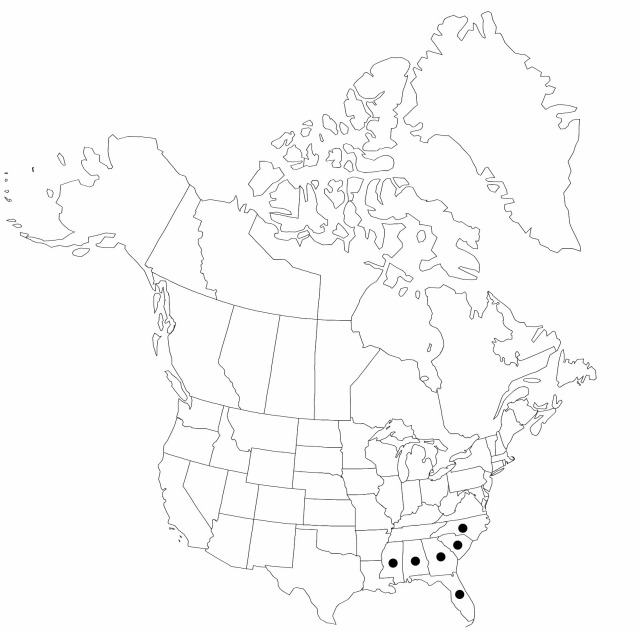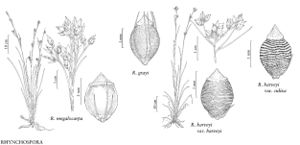Rhynchospora megalocarpa
Ann. Lyceum Nat. Hist. New York 3: 208. 1835.
Plants perennial, cespitose, to 130 cm, coarse; rhizomes scaly, stoloniferous, stout. Culms erect to arching, leafy, trigonous, slender, firm. Leaves overtopped by culms; blades linear, proximally flat, 3–7 mm wide, apex trigonous, subulate, tapering. Inflorescences: spikelet clusters 2–6, sparse, widely spaced, turbinate; peduncles and branches ascending; leafy bracts exceeding proximal clusters. Spikelets light redbrown, ovoid to ellipsoid, (4–)5–8(–9) mm, apex acute or acuminate; fertile scales ovate, (5.5–)6–6.5(–7) mm, midrib included or shortexcurrent. Fruits 1–2 per spikelet, (3.5–)4–5 mm; body dark brown to mahogany or nearly black, broadly obovoid, tumid, nearly smooth, buttressed to tubercle; tubercle lowconic, rimmed, 0.7(–1) mm, apex apiculate. Flowers: perianth bristles 6(–8), mostly reaching from fruit midbody to tubercle base, antrorsely barbellate.
Phenology: Fruiting summer–fall.
Habitat: White or yellow sandhills
Elevation: 0–300 m
Distribution

Ala., Fla., Ga., Miss., N.C., S.C.
Discussion
The perianth in Rhynchospora megalocarpa is unusual. The receptacular joint is stubby, bearing staggered cycles of bristles that vary extremely in length and number—on a par with R. alba, R. baldwinii, and R. macra in numbers of bristles. The greatest extreme is twelve, the fewest as low as two; usually if the number is low, the remaining sites for bristles will be dark-colored nubbins.
Selected References
None.
